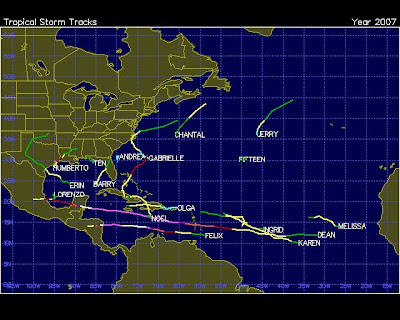Wind shear is the change in wind speed or direction with height in the atmosphere. Wind shear is important for the formation of tornadoes and hail. Some amount of wind shear is common in the atmosphere. Larger values of wind shear exist near fronts, cyclones, and the jet stream. Wind shear in an atmospheric layer that is unstable can result in clear air turbulence.
Tornadoes occur with thunderstorms. There are a couple of ways that they form.
Most strong and violent tornadoes occur with supercell thunderstorms.
Thunderstorms occur when warm moist air is forced upward.
Tornadoes occur with a special storm type called a supercell.
Supercells occur with a certain wind conditions. Winds that turn from south to west with height and/or increase rapidly with height (especially in the lowest several thousand feet of the atmosphere) cause the updraft in a thunderstorm to rotate.
If the updraft is strong enough and the wind shear is strong enough, a tornado may occur. Supercells also produce large hail, strong winds and heavy rain.
Tornadoes - The Fujita-Pearson Scale
All tornadoes are rated on a scale called the Fujita-Pearson Tornado Scale.
F-0: 40-72 mph - Chimney damage, tree branches broken.
F-1: 73-112 mph - Mobile homes pushed off foundation or overturned.
F-2: 113-157 mph - Considerable damage, mobile homes demolished, trees uprooted.
F-3: 158-205 mph - Roofs and walls torn down, trains overturned, cars thrown.
F-4: 207-260 mph - Well-constructed walls leveled.
F-5: 261-318 mph - Homes lifted off foundation and carried considerable distances, cars thrown as far as 100 meters.
















